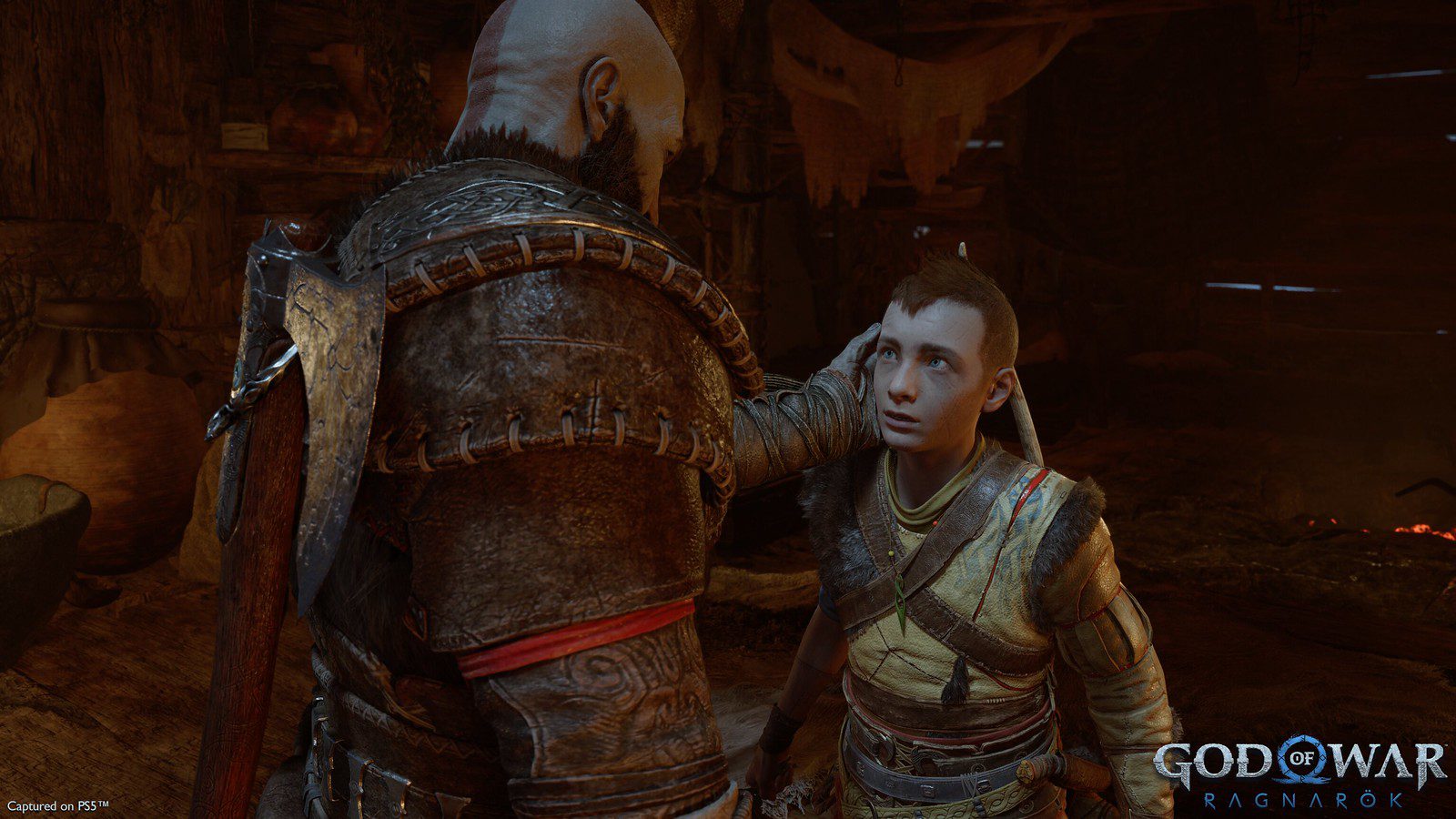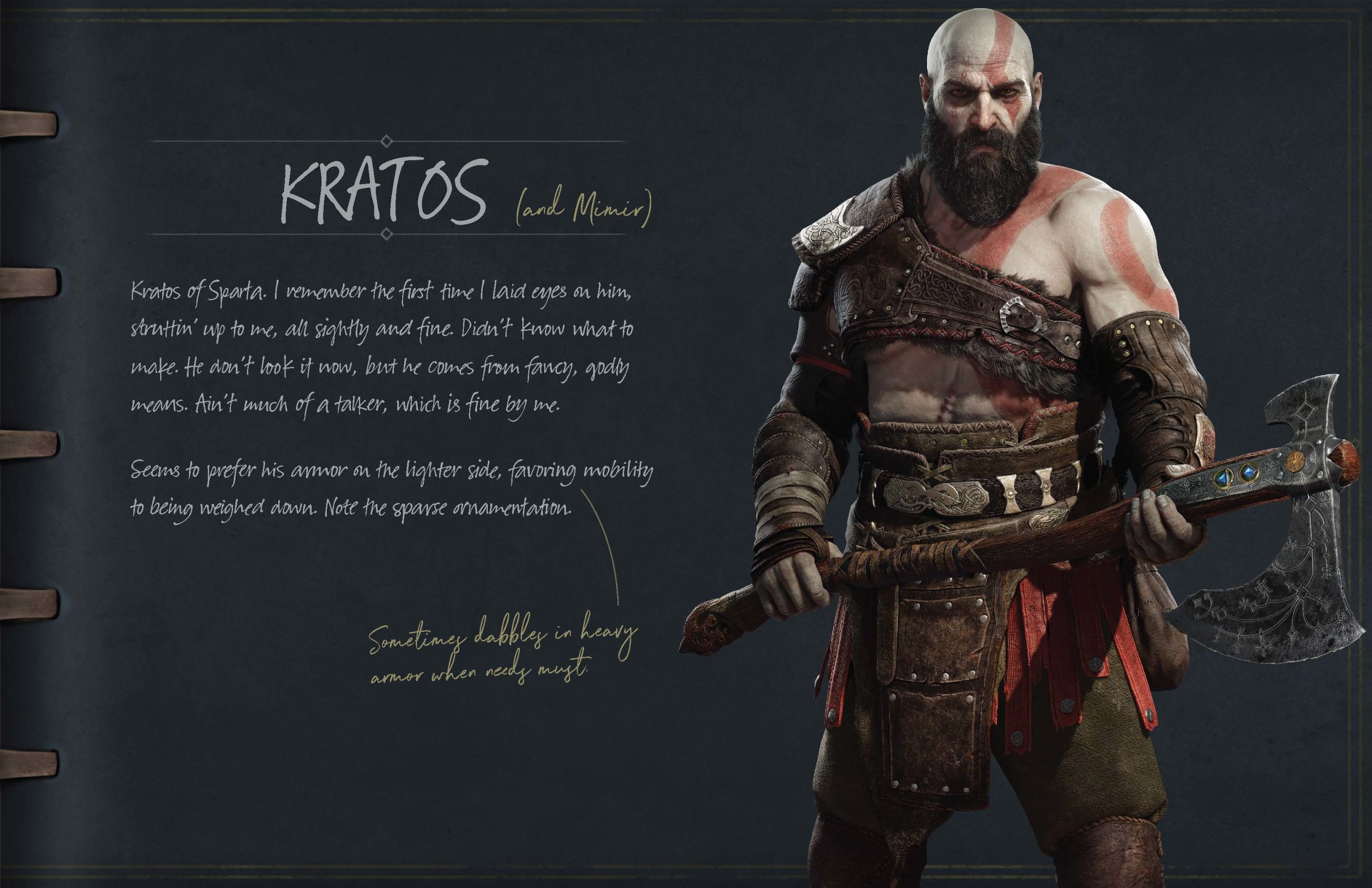Our return to Midgard and the rest of the nine realms is nearly here. God of War Ragnarök launches on PS5 and PS4 on November 9, and I’ve had the lucky opportunity to scout ahead and go hands on with the PS5 version of Kratos and Atreus’ continuing journey.
No big story spoilers lie ahead in this article – and that’s just fine because there’s tons to talk about in terms of pure gameplay, visuals, inventive new enemies, locations, and more. Without mentioning specific characters or moments, I will say this sequel doesn’t wait long to deliver memorable, unexpected moments with a diverse cast of mythical characters.
Read on to learn about God of War Ragnarök’s familiar-yet-fresh combat, deadly new enemies, exotic locales, and more.
Mythical immersion on PS5
Winter wonder – The world of Midgard sparkles on PS5 thanks to crisp 4K visuals and fluid framerates (I played in Performance mode). Fimbulwinter is creeping across the lands, including Kratos and Atreus’ homestead. Snow crumbles and parts as characters trudge through it, with light catching tiny ice crystals on its surface. Frozen waterfalls stand like intricate, towering art pieces. The atmosphere of this snow-covered Midgard captures the serene vibe of a winter walk in the woods perfectly.
Haptic immersion – Santa Monica Studio has taken full advantage of the DualSense wireless controller’s haptics. One sequence involves dogsledding away from a violent avalanche. The DualSense controller’s haptics thrummed in my hands, conveying both a deep rumble of rushing land and lighter clumps of snow tumbling about. In combat, the Leviathan Axe packs an extra visceral punch, and when the boomeranging weapon is recalled the haptics gradually swell until the axe lands in hand with a meaty thud The range of haptics also brings texture to subtle moments, like Kratos laying his weary body down in his cot to sleep.
Versatile combat options
Settling back in – I’ll admit it took me until the back half of God of War (2018) until I felt proficient with the new combat mechanics. The intimate camera position, ranged and melee Leviathan Axe, and abundant combat options overwhelmed me a bit. In contrast, picking back up Kratos’ axe and Blades of Chaos at the beginning of God of War Ragnarök filled me with confidence and a lust for battle. Wielding both weapons at the outset encouraged me to make more complete use of Kratos’ arsenal, and it’s a blast.
Death From Above – Kratos can now take a sprinting leap off a cliff and slam into enemies below – a furious intro to any group fight that stuns enemies. The new combat option is a potent example of God of War Ragnarök’s increased focus on verticality in the environment.
Stay frosty – The triangle button, used for equipping and recalling the Leviathan Axe, can be pressed when held to apply a Frost Awaken effect to your next melee or ranged attack. Pressing R1 during Frost Awaken executes Frozen Breach – a wide swing and applies Frost to nearby enemies. Aiming while pressing R1 during Frost Awaken executes Frozen Spike – a quick throw of the Leviathan Axe that creates a Frost explosion on impact. Kratos’ expanded range of elemental attacks injects refreshing new options into each encounter.
Flaming Blades of Chaos – Similar to the Leviathan Axe’s Frost Awaken, you can mash the triangle button with the Blades of Chaos equipped to perform a Flame Whiplash. This charges Kratos’ chained implements with fire, great for melting enemies’ icy defenses. More importantly, Kratos looks undeniably cool spinning the blade’s chain to stoke the flames.
Huldra homestead – Kratos and Atreus visit Brok and Sindi’s shop and home to gear up. While there, I upgraded my Leviathan Axe to level 2, boosting damage significantly and unlocking a new tier of skill tree abilities. Atreus was also outfitted with new armor. My favorite detail is the inclusion of a chest containing lost loot, where the Huldra brothers store any resources that players may have accidentally left lying on the battlefield.
Customizing gear – Once again, you can customize your weapons and armor, including slottable gems for Kratos’ Leviathan Axe. After a battle with a ferocious stalker named The Huntress, I acquired Winter’s Bite, a light runic attack that forms a mass of ice around Kratos’ axe for extra damage. Another applies a flaming uppercut-style attack to the Blades of Chaos. I found both moves handy as quick get-out-of-jail-free cards when surrounded by enemies. Just mind that cooldown timer.
Shield of choice – Kratos’ Guardian Shield is damaged during battle, and Brok offers to craft an additional defense while he works on repairs. Players can pick from two new shields to start with: the Stone Wall Shield, specializing in soaking up attacks and striking back, and the Dauntless Shield, which is all about high-risk, high-reward parries. Eventually players can scrounge up enough resources to craft all shields.
Dauntless Shield test drive – I opted for the Dauntless Shield, hoping that my experience mastering narrow parry windows in action games like Sekiro: Shadows Die Twice may come in handy. It did! A carefully timed tap of L1 against an incoming strike parries attacks and produces a flash of light, stunning foes for a generous length of time. I found this immensely helpful for crowd management and relish the incentive to better study enemy attack patterns.
Threats of the realms
Thor throwdown – If you loved the bombastic Baldur encounter at the start of God of War (2018), look forward to clashing axe and hammer with Thor in a similarly spectacular battle. Thor unleashes a combo of grabs, lightning-infused Mjölnir blasts, area-of-effect volleys, and more. The two gods grapple and fly through the air as the battle rages across multiple frozen landscapes. Thor’s assault is nonstop, peppering in cutting insults against Kratos’ parenting skills when he’s not outright attacking. It’s a memorable encounter that left me eager for a rematch against the God of Thunder.
Raider rumble – Hardy, violent Raiders wander the Wildwoods, attacking Kratos because they know he’s responsible for bringing on fimbulwinter. These melee and ranged foes are easy fodder for sharpening your melee skills and satisfying test dummies to boot.
Björn battle – A mighty bear attacks in one of the first boss battles. The burly animal begins with predictable swipes for Kratos to parry, but also introduces additional cues, like yellow circles that indicate Kratos can block but will still receive damage, and red circles indicating unblockable attacks. The bear’s attack pattern is a ferocious yet forgiving onramp, hinting at tougher battles to come.
Dreki brawl – One of my favorite fights from this slice of the game pits our duo against the Dreki, a crocodile-like dragon beast. The quadrupedal creature snaps with its massive maw, swipes with its scaley tale, and dishes out electrical attacks that force players to keep moving. Using the Dauntless Shield to parry a volley of attacks while dodging zaps feels natural and satisfying – a well-tuned fight that perfectly tests players’ growing skill with tough-but-fair intensity.
Bifröst damage – Near the very end of the preview session, a new bloodthirsty enemy type emerges to protect something deep in a dwarven mine. The pale, tattooed Einherjar unleash fierce attacks that deal Bifröst damage to Kratos – represented by a purple section of the HP bar. Bifröst damage is harmless at first but when these foes hit a second time it detonates the affliction and slices a significant chunk off your HP. Watch your back, dodge readily, and be ready to parry to survive weaponized Bifröst.
Exploring the realms
Realm lockdown – Odin has the realms cut off at the beginning of God of War Ragnarök, so Kratos is unable to use the Bifröst to travel. Thankfully, Brok and Sindri have reconfigured the mystic gateways as an alternate means of travel.
Wintering in Svartalfheim – While Fimbulwinter has enveloped Midgard in cold and snow, it’s had different effects on other realms. In Svartalfheim for example, subterranean pressure has increased, pocketing the land with powerful geysers. Mimir (the wise, talking head strapped to Kratos’ belt) also mentions a potent odor has spread across the land.
Puzzling platforming – Navigating the realms requires clever use of Kratos’ implements. In one instance I needed to move a pillar blocking the path. This required me to first toss the Leviathan Axe to shatter a log bracing the pillar down, then brandish the Blades of Chaos to wrangle the pillar from the path. Another example involves crafty use of the Leviathan Axe’s elemental properties to manipulate watery obstacles in the realm of Svartalfheim… but I’ll leave that to you to discover.
Sonic arrows – In the dwarven town of Niðavellir, Sindri equips Atreus’ bow with a new sonic-powered string. This enhancement is attuned to blast apart objects pulsing a light blue green around the environment, like passages leading to new areas and alcoves hiding chests filled with Hacksilver. Atreus’ ability to destroy this glowing material injects a deeper layer of joint environmental puzzle-solving and navigation for the pair.
Exploration and side quests – Fans who adore turning over every stone in the realm can rest assured that exploration is abundant and rewarded in this sequel. While venturing through a charming yet uninviting dwarven town, Kratos and Atreus cross paths with a dwarf who has history with Mimir. The dwarf mentions mining rigs that Mimir once championed have caused a mess in these lands. If players choose to pursue this Favor, they can correct Mimir’s past wrongs for a reward. Later, while navigating a canoe across a vast, brilliant blue lake I spot pillars of black smoke billowing from these mines. I chose to forge ahead on the main quest path but was reassured when Atreus organically mentioned we could return to complete the Favor later.
Dwarven Compass – Sindri bestows a “beautiful gift” upon Kratos – a compass that allows players to track objectives on the map, then follow a compass at the top of the screen towards their destination. Perfect for efficiently tracking objects like Favors and other side quests.
The opening hours of God of War Ragnarök are jam-packed with exciting story moments and top-notch combat encounters. These are just a few moments and details from the outset that have me so excited to dive deeper into combat, explore the realms, and learn what the fates have in store for our heroes.
Not long to wait now – God of War Ragnarök launches on PS5 and PS4 November 9.
Website: LINK































